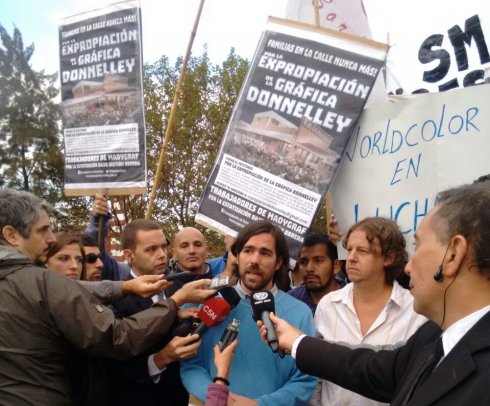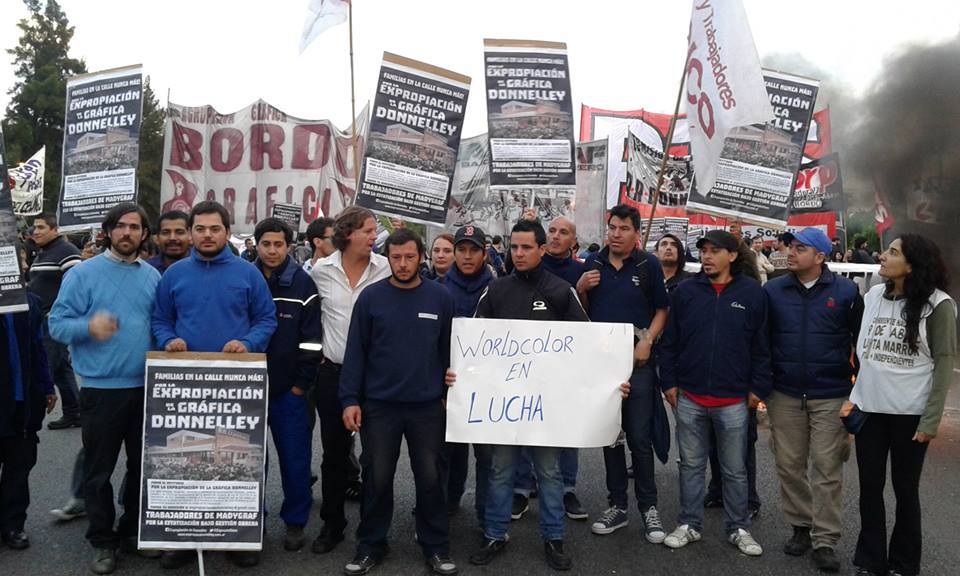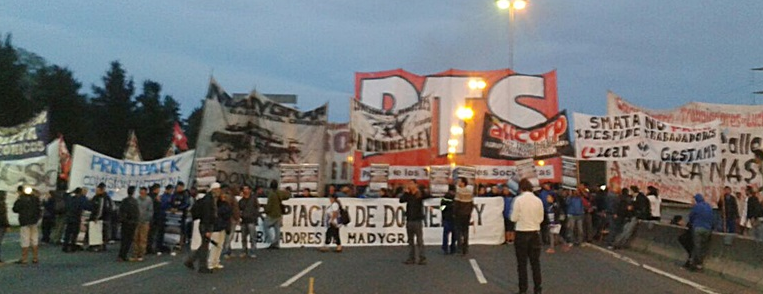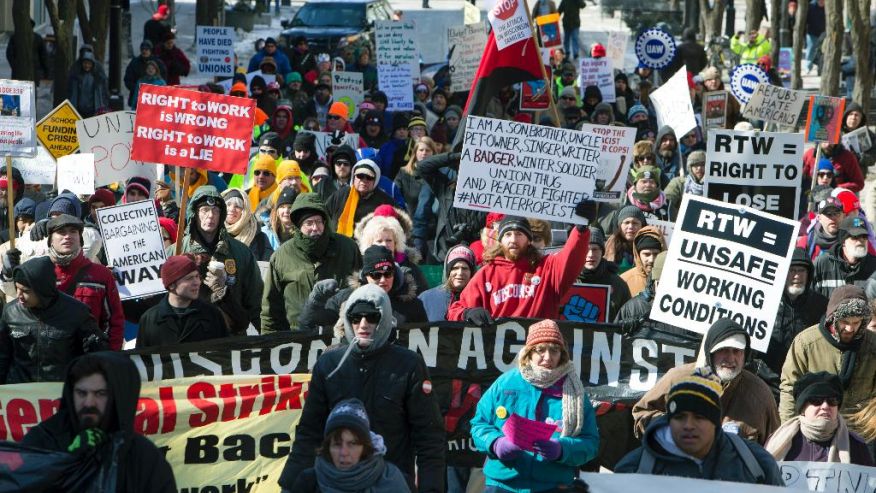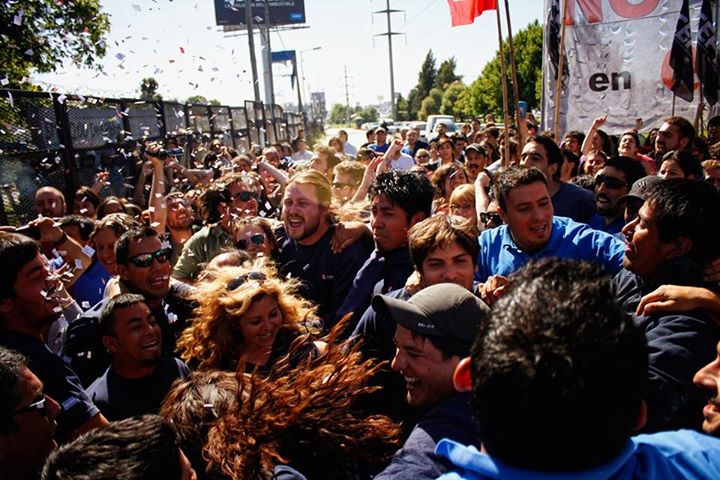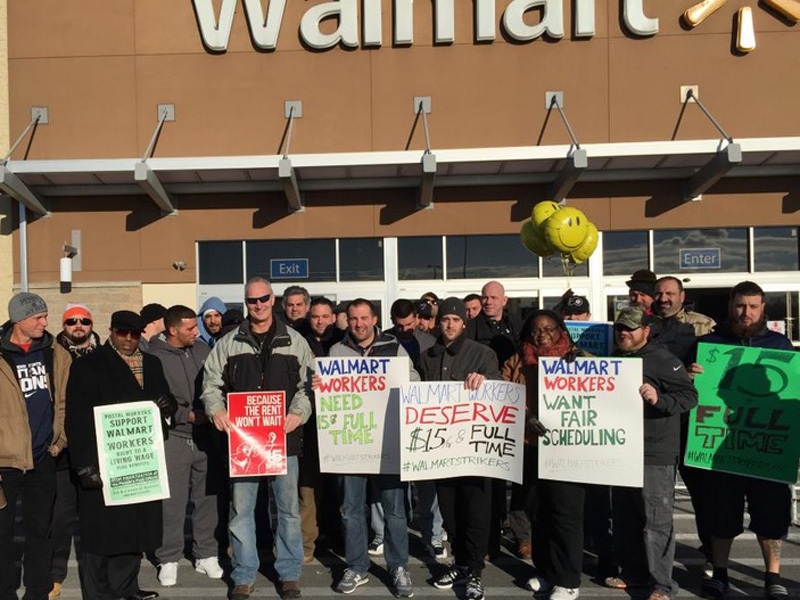Walmart workers stand up
03/12/2013
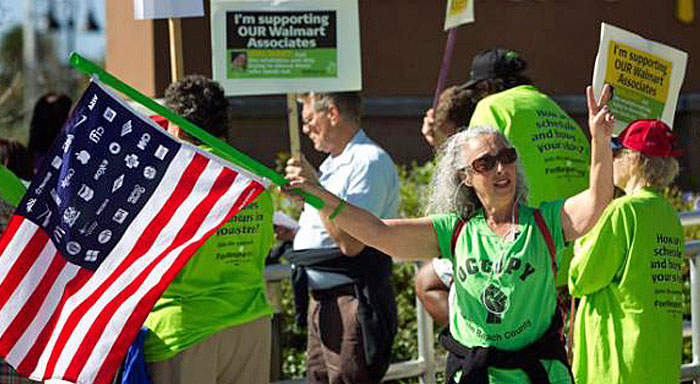
This Black Friday, the yearly feast of American Consumption was tarnished by an undesired presence: over one thousand protests at Walmart stores across the country.
The day after Thanksgiving, widely known as Black Friday, is the highest grossing retail day of the year and traditionally kicks off the Christmas shopping season. Over time, this day has turned into one of the most revolting phenomena of the consumer society: lines outside the gates of the stores throughout the night and early morning, disputes between consumers trying to seize the best deal and stampedes that leave many shoppers injured and more than one dead. This past Friday, for the first time, some stores began their Black Friday sales the night before- a timeslot previously reserved for observation of Thanksgiving dinner.
But since last year, this special occasion has also marked a new cause of resistance for the most exploited members of the working class. Walmart workers target this super sales day to ramp up the protests against the retail giant, risking the lay-offs and, in several cases, arrests by the police for blocking store entrances and street access. This Friday saw protests at 1500 Walmart stores across the country.
The company’s policies prohibiting worker organization turns any protest into an uphill battle; last year’s strike was the first in Walmart’s 50 year history. The OUR Walmart (Organized United for Respect), a group without union status backed by the UFCW [1] (United Food and Commercial Workers International Union), has called workers from other sectors and the community to support the protests this Friday. The American Federation of Teachers (AFT) as well as the UFCW, in collaboration with activist of the OWS movement and a wide community support, helped to guarantee actions across the country. Workers spoke out in California, Alaska, New Jersey, Virginia, Florida, Texas, Minnesota, Illinois, Washington, Maryland and even in Canada. At least 100 protesters were arrested for ‘civil disobedience’.
First round
Walmart workers are fighting for a living wage, better working conditions and, most recently, the reincorporation of 23 workers fired for joining the protests in June. The National Labor Relations Board (NLRB) has announced that it will issue a complaint against Walmart, since there is enough evidence of direct retaliation against those going on strike. This addresses the firing of 117 employees over the last year. This is not an isolated blow: as the numbers showing Walmart success spread, the company receives hits from all sides. The blatant contrast between the corporation’s profit and the wage of its employees has forced a number of Democratic congressmen to trumpet their support for a raise in wages and to condemn retaliation practices [2]. President Barack Obama, however, has consistently expressed praise for the transnational corporation. Rep. Alan Grayson (D-Fla.) has pointedly asked, “What has Walmart given the president in return," for such bad working conditions and precariousness [3]. The more liberal representatives make their best effort to recover some positive image, crucial in the present political climate in which the Hill suffers the lowest popularity index in history [4].
But the crisis of institutions affects not only Congress. An increasing percentage of workers and the poor are experiencing disappointment with their ostensibly populist president. Barack Obama has demonstrated that, in addition to being a great speaker, he is a conspicuous defender of corporate interests, as well as a diligent collector [5]. His trump card in the name of democratic rights, the Healthcare overhaul, not only proved a most beneficial to the health industry complex, but has also been overshadowed by the countless flaws in its implementation, unexpected spillovers and the many amendments. The Republicans, in turn, don’t manage to get over the crisis that is taking years and has deepened with the pressure of the Tea Party to hold a hard line that led to last government shutdown [6]. However, while a record-high one out of seven US citizens relies on food stamps to feed their family, Republicans and Democrats agree on spending cuts to this program starting in January 2014. Even worse: it was thanks to the votes of Democrats that this October the biggest cut in the history of this program was executed.
The numbers
Walmart pays an average wage of less than $9 per working hour. Two thirds of the more than 1.3 million employees earn less than $25,000 per year, the wage floor demanded by workers (the living wage of two adults, in order to maintain a family with two kids is around $ 45,000 each [7]). The current wage qualifies these workers for food stamps, as is also the case with 52 % of fast food workers. Together, spending on Medicaid and food stamps represent an annual cost of $ 900,000, just for one Walmart branch in Wisconsin [8]. The federal government is effectively subsidizing the company’s low wage policy. Walmart is a symbol of the institutionalized concentration of wealth in the US: the Walton family fortune exceeds $144 billion, equivalent to the property value of 40% of the American population. While paying markedly low wages, Walmart made a profit of $17 billion in 2012 [9]. We continue to see this trend throughout the economy: while unemployment and low wages burdened the working class, corporations attained unprecedented profits in the second quarter of 2013 [10].
Walmart is the biggest employer in the US, and the company with the largest profit worldwide. It is also the first gun seller in the country, and its ties to the American Legislative Electoral Council, the main proponent of the “Stand your-ground law”, are well-known.
The resistance
But Walmart workers, as well as other branches of the American precariat, are beginning to stand up. In cities with greater protest traditions such as Chicago and San Francisco, expressions of resistance were more overt. The workers’ self-confidence is rising and they are slowly daring to confront the retaliation of the bosses and the repression of police. The success of these Black Friday protests, along with the decision of the NLRB and the Democrat representatives’ liberal rhetoric, can tip the scales to the reincorporation of the 117 fired employees, included the 23 that walked out during the recent June protests. Such would be a great victory for Walmart workers and a strong thrust towards unionization. Progress in this movement can foster a similar momentum for warehouse workers and other outsourced service employees, as well as other branches of the retail and service sector. The relocation over the past decades of manufacturing to more competitive markets augments the weight of retail and service sectors in the economy. From this vantage point, even with difficulties arising from lack of organization in the sector, and the labor instability that they face, the service precariat appears to be the strongest candidate to play the lead in the upcoming class struggle. On this path they will have to deal with divisions within the working class -especially with the more concentrated, unionized proletariat- and try to strengthen alliances with the youth, the immigrant and the most exploited sectors.
NOTASADICIONALES
[1] The AFL-CIO plays the role of union support of the Democratic Party, and neglects organizing precarious workers and does not overtly support their right to unionize. However, it has echoed this phenomenon and tries to channel this grievances with some partial support, as through the UFCW.
[2] Salon, 11/29/2013
[3] Salon, 11/29/2013
[5] Barack Obama broke all the records in 2013 in number of visits to wealthy donors raising funds for the Democrats campaign for 2014 mid-term elections. (The Guardian 12/11/2013)
[8] Huffington Post 05/31/2013
[9] Huffington Post 11/26/2013
[10] Ecomonitor 9/26/2013
